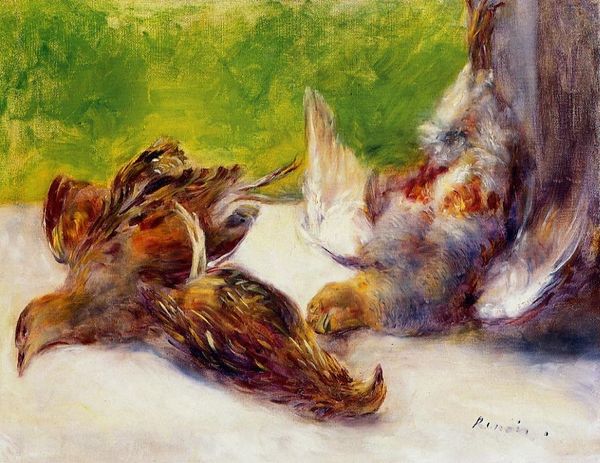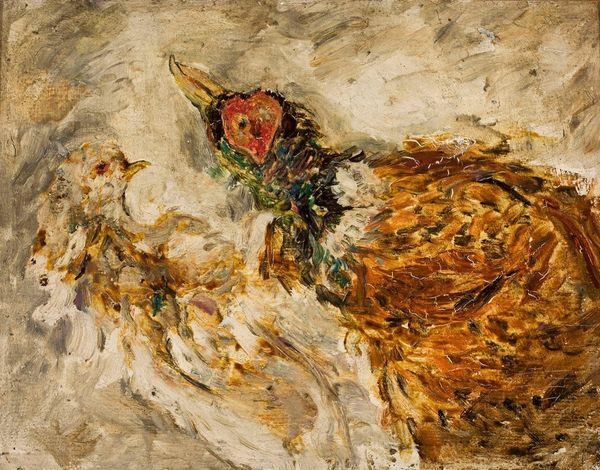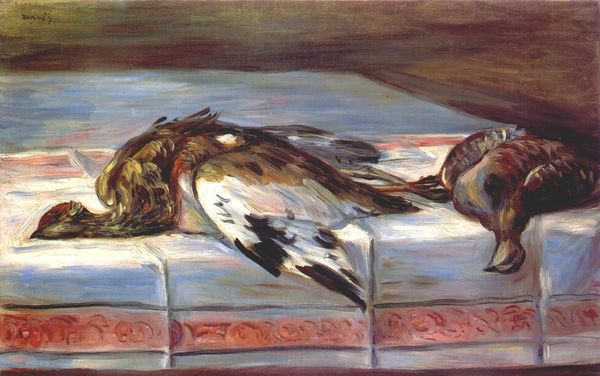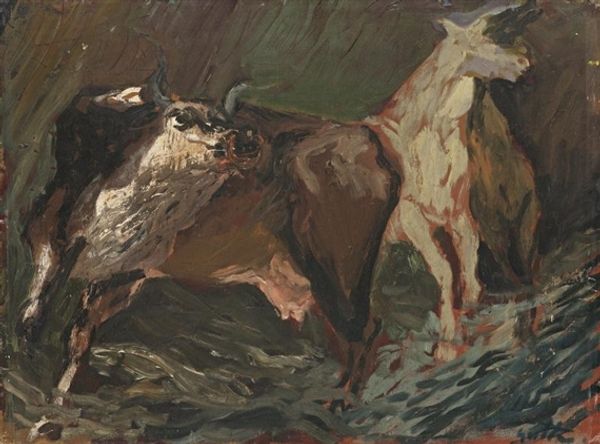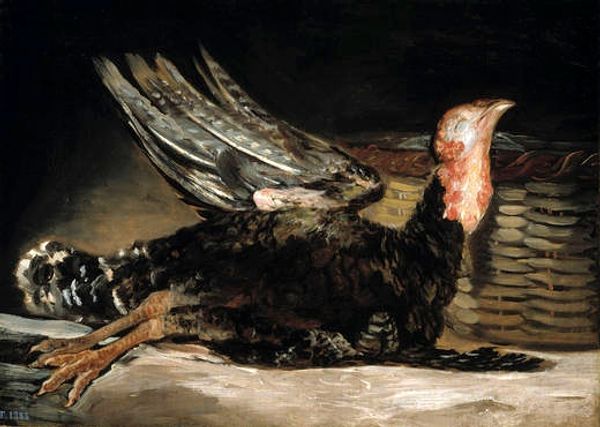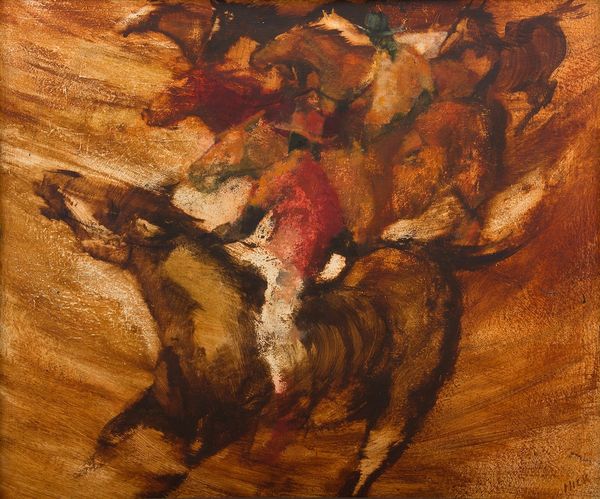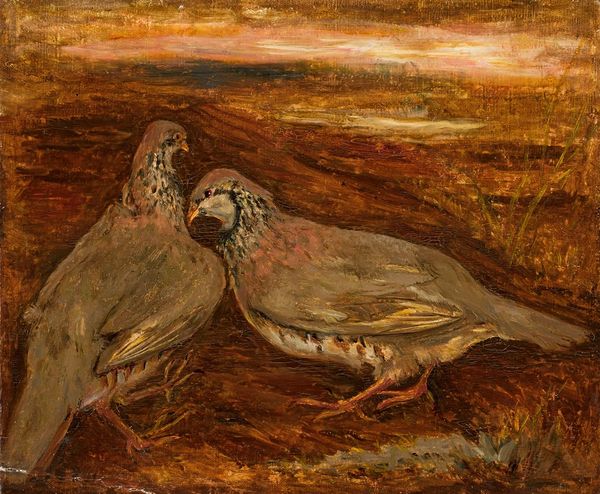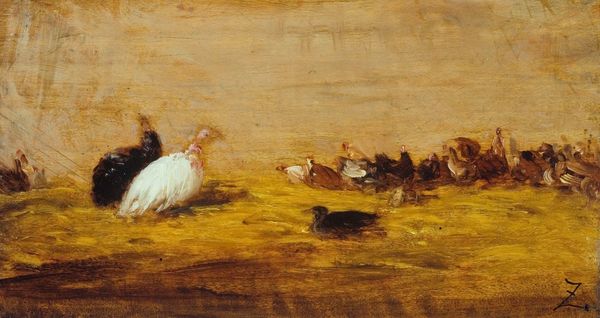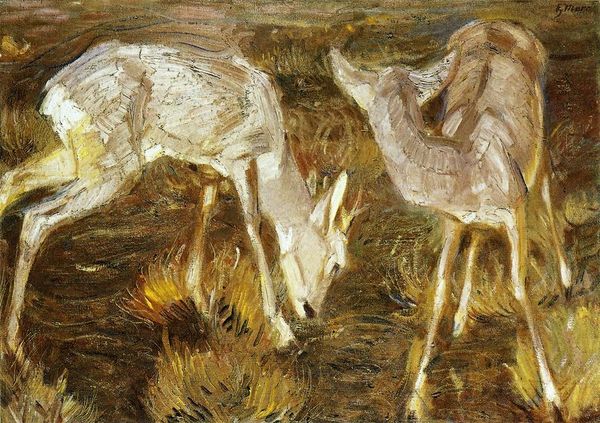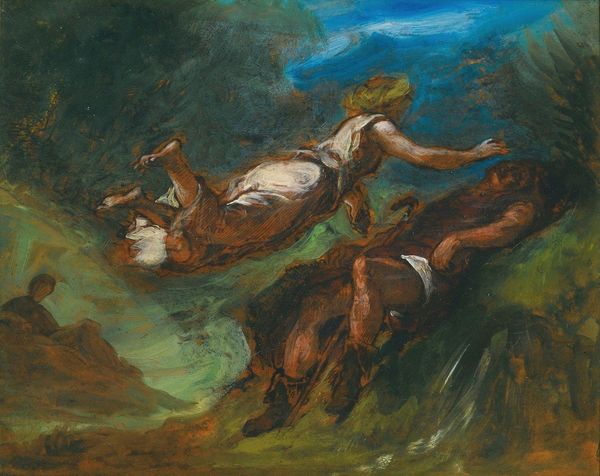
Copyright: Public domain
Curator: Pierre-Auguste Renoir's “Faisans, Canapetiere et grives," painted in 1902, presents us with a still life of dead game birds. Editor: It strikes me as a particularly melancholic arrangement. The subdued lighting and muted color palette seem to emphasize the stillness and finality of death. Curator: Genre painting often served a dual purpose. Beyond mere representation, these compositions affirmed social hierarchies and class distinctions, particularly regarding hunting rights and dining culture. Who benefitted from and was affected by such representations? Editor: I see how the artist manipulates light to create contrasts between the rich textures of the birds' plumage and the coarse fabric beneath them. There’s a stark reality portrayed here, almost hyperreal, achieved with swift, visible brushstrokes. Curator: Precisely! Consider how this form is deployed in an age of growing industrialization. Perhaps we could consider these paintings to be nostalgic assertions about land use, pre-industrial, aristocratic tradition, and masculine privilege in opposition to emergent, competing cultural norms. Editor: Though there is such a fascinating contextual and material perspective at play, I'm moved by how Renoir directs my eye to a play between the vibrant colors and textures, such as the delicate rendering of feathers against the muted backdrop, making it so that you forget that you’re faced with a scene of death. Curator: By focusing on the sensuality and aesthetics, the scene risks aestheticizing the death of living beings to be little more than a luxury item. The art, then, subtly reaffirms a certain ideology. Editor: I appreciate how you’ve highlighted those sociopolitical themes interwoven in the art of Renoir. Curator: It's always fascinating to recontextualize familiar art pieces and consider its many nuances and social underpinnings.
Comments
No comments
Be the first to comment and join the conversation on the ultimate creative platform.

